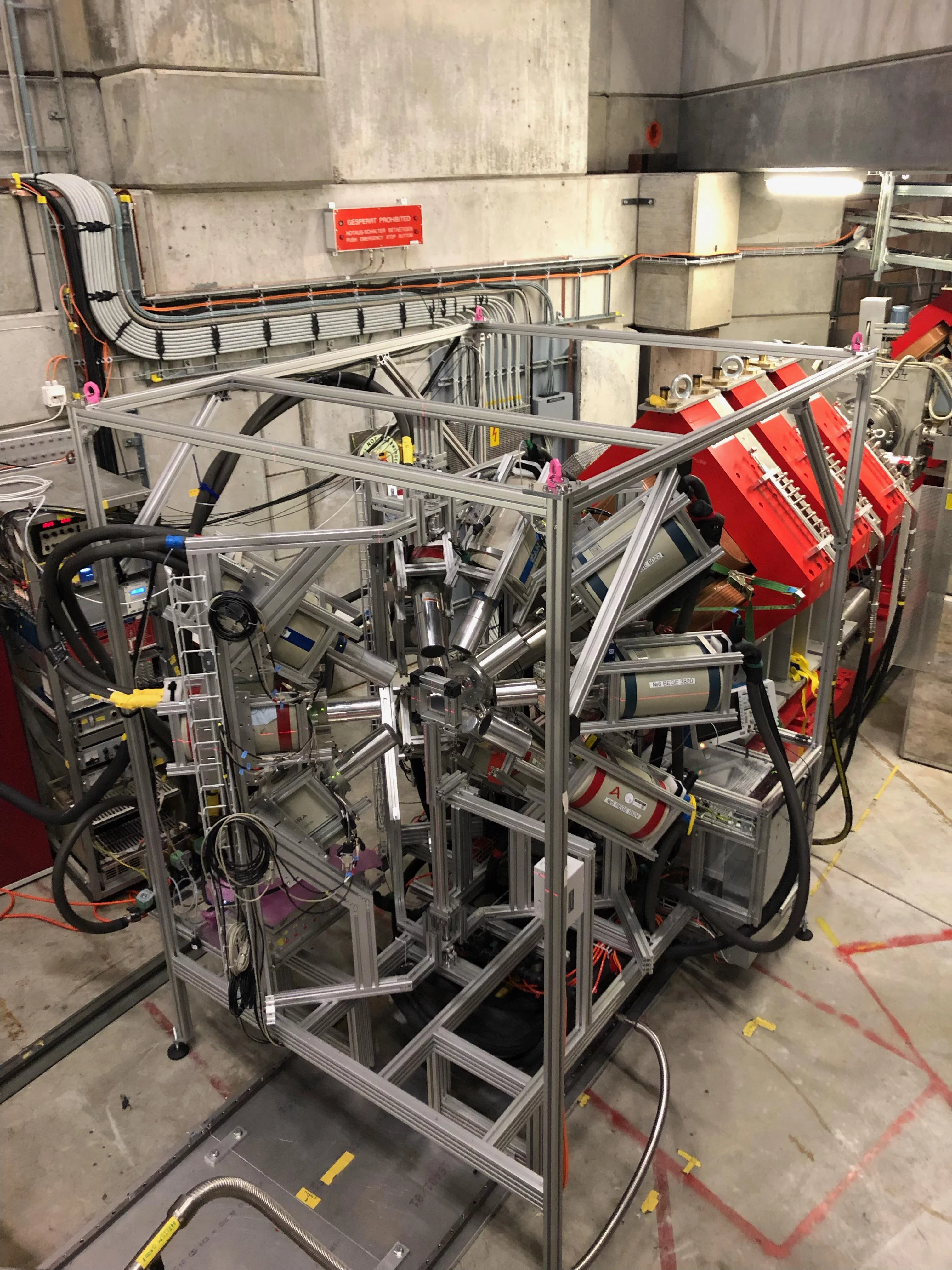Introduction to the MIXE Project
The availability of a truly non-destructive experimental method to perform depth-resolved element analysis of materials is considered a key ingredient for a wide range of applications, especially in the field of archeological artefacts or operando studies of devices. Important requirements are high penetration depth combined with elemental sensitivity, including light weight elements. To date, element analysis studies involve either destructive methods, which are not thinkable for rare, costly or operando studies, or methods with severe limitations in sensitivity, penetration depth or depth resolution. This multidisciplinary project, funded by the SNSF Sinergia grant Deepµ aims at exploiting high energy muonic X-rays (produced by the cascade to their ground state of implanted negative muons which have been captured by an element) to provide a bulk, depth-sensitive (up to several millimeters), and non-destructive elemental analysis method sensitive to basically all the elements. To achieve this task, we have formed an interdisciplinary team of highly specialized scientists, working in Swiss institutions (Paul Scherrer Institute, Empa, Museum of Augusta Raurica and the University of Bern) in a wide range of fields and disciplines.
The first goal of the project is to develop a fully-fledged experimental solution for element analysis based on muonic X-ray fluorescence. By exploiting the specific characteristics of the continuous muon beams available at the Paul Scherrer Institute, a rate improvement of three orders of magnitude can be achieved compared to similar recent projects started at pulsed beams. This first goal will encompass the technical aspect and will enclose the development of an appropriate detector setup, a suitable sample environment for different possible types of specimens and a proper data-taking system.
The second goal will be to apply and validate the technique to specific research fields, by demonstrating its impact on key experimental case studies covering a wide range of disciplines including archaeology, battery materials, and extraterrestrial geology. For archeology, we plan to make use of the non-destructive and depth-sensitive aspect of the muonic X-ray fluorescence technique to investigate several rare and costly specimens to determine the element composition. This will provide insight on the function, role, and meaning of these objects within society. For battery research, we plan to make use of the depth-profiling capability of a working lithium-ion battery and to specifically investigate thick cathode layers (typically transition metal oxide based) that promise higher capacity than state-of the art composite cathodes. Furthermore, we will study the dissolution and deposition of cathode material across the battery towards the anode as one of the critical failure mechanisms. In both cases, the high penetration depth of the muons and the high escape depth of the muonic X-rays together with the simultaneous sensitivity to light elements (Li) and transition metals (Ni, Mn, Co) is key to understand battery performance and failure mechanisms. For extraterrestrial geology, we want to demonstrate that a non-destructive and deep below-surface element composition analysis of meteorites is possible.
Our preliminary tests performed at PSI clearly demonstrate that these first two goals can be considered as “low-risk high-impact” research. Once the method has reached its maturity, we would like to investigate the possibility to perform tomographic reconstruction, i.e. obtain a 3D mapping of the element present in a specimen. Though this last part can be considered as “high-risk very-high-impact”, we are confident that sufficient know-how is available for its success. In any case, we note that the two first goals by themselves will already provide a considerable breakthrough in the non-destructive element analysis of samples.
MIXE Milestones
- 2020/06 SNSF Sinergia funding application accepted
- 2021/01 Begin of Project.
Funding
This project received funding via the SNSF Sinergia project Deep-µ, from PSI, and via SFA-AM of the ETH-Board.


